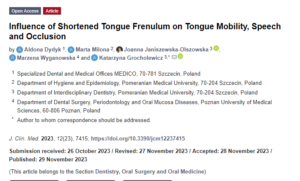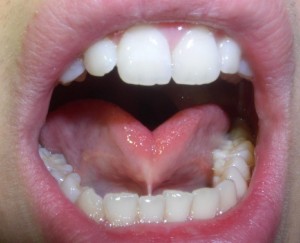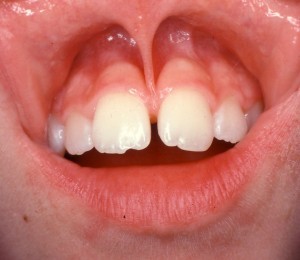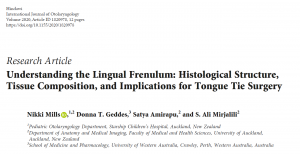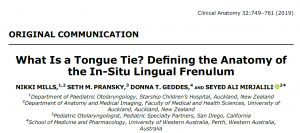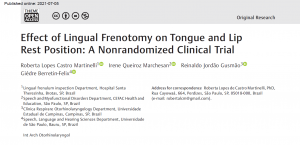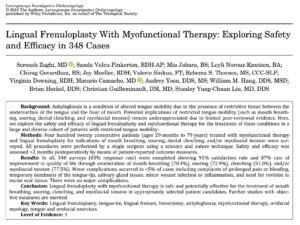Understanding Tongue Ties and Oral Restrictions
The lingual frenulum is a dynamic band of connective tissue that runs along the midline of the floor of the mouth, attaching to the underside of the tongue. Similar folds of tissue, known as frenula, are also found beneath the lips and inside the cheeks. While these structures are a normal part of oral anatomy, sometimes a frenulum may be unusually tight, thick, or short. When this restricts the movement and function of the tongue, it is often referred to as ankyloglossia, or more commonly, a tongue tie.
How Tongue Ties and Oral Restrictions Affect Function
According to the work of Dr Nikki Mills, a New Zealand paediatric ENT surgeon and researcher in this field, tongue ties are not simply about appearance — they are a functional diagnosis. This means that the real question is not what the frenulum looks like but how the tongue works.
When a frenulum limits tongue movement, the consequences can vary with age:
-
In Infants: A tongue tie may affect an infant’s ability to latch and feed effectively. This can lead to poor weight gain, prolonged or painful feeding sessions, and secondary symptoms in mothers such as cracked or sore nipples, blocked ducts, low milk supply, or recurrent mastitis.
-
In Children: Oral restrictions may make chewing and swallowing more difficult. They can also impact tongue posture at rest, which plays a key role in jaw development and nasal breathing. Over time, this may contribute to changes in dental arch shape, crowded or crooked teeth, open bites, or spacing such as diastemas. Some children also develop compensations in speech, which can result in unclear articulation of certain sounds.
-
In Adolescents and Adults: A restricted tongue may contribute to mouth breathing, jaw tension, headaches, clenching and grinding, and even symptoms of sleep‑disordered breathing. Adults often report difficulty with tongue mobility during eating, speaking, or even kissing, along with persistent oral or facial tension.
Dr Mills’ research emphasises that oral restrictions may also affect airway stability. A low‑resting tongue posture reduces palatal support, which can narrow the upper airway and increase the risk of snoring or sleep‑disordered breathing over time.
Why Assessment Matters
It is important to understand that diagnosing a tongue tie is not as simple as asking a patient to “stick out their tongue.” A thorough functional assessment is essential to determine whether a frenulum is truly restricting movement. At Smile Tone, we evaluate:
-
Range of Motion using Tongue Range of Motion Ratios (TRMR), a reliable measurement tool described in recent research.
-
Appearance and Palpation of the frenulum — including its thickness, elasticity, and point of attachment.
-
Functional Symptoms — including feeding challenges, speech patterns, chewing and swallowing efficiency, and any signs of sleep or breathing difficulties.
-
Compensatory Patterns — such as excessive lip, cheek, or jaw muscle involvement to achieve movements the tongue cannot perform independently.
This comprehensive approach, supported by Dr Mills’ findings, helps ensure that treatment recommendations are based on function, not just appearance.
Treatment Options
Not all oral restrictions require surgery. In many cases, targeted orofacial myofunctional therapy (OMT) can significantly improve tongue mobility, oral posture, and muscle coordination. Therapy is particularly important before and after any surgical intervention to ensure the tongue learns to move efficiently once restrictions are released.
When surgery is recommended, it may be performed using one of several techniques, including:
-
Frenotomy – a simple release of the frenulum
-
Frenectomy – complete removal of the frenulum
-
Frenuloplasty – a more complex procedure that may involve suturing or reconstruction of the area
Different practitioners — including ENT surgeons, oral surgeons, dentists, and paediatric specialists — may provide these procedures, and the choice of technique will depend on the patient’s age, anatomy, and needs.
How Smile Tone Can Help
At Smile Tone, we provide thorough oral and tongue function assessments for children and adults. For infants, we recommend an assessment with an International Board Certified Lactation Consultant (IBCLC), who can evaluate feeding dynamics.
If a restriction is identified, we guide families through:
-
Individualised Pre‑Frenectomy Programs – exercises and strategies to prepare the tongue and surrounding muscles for optimal outcomes.
-
Post‑Frenectomy Rehabilitation – tailored therapy to prevent re‑attachment, encourage wound healing, and teach the tongue new functional movements.
-
Referral to Experienced Providers – connecting you with trusted dentists, ENT surgeons or manual therapists when surgical intervention is appropriate.
Our goal is not only to release restrictions when needed but to ensure the tongue and surrounding muscles learn to function effectively — supporting better breathing, eating, speech, sleep, and overall quality of life.
✨ If you are concerned about a possible tongue tie or oral restriction, contact Smile Tone today to book a comprehensive tongue function assessment.


